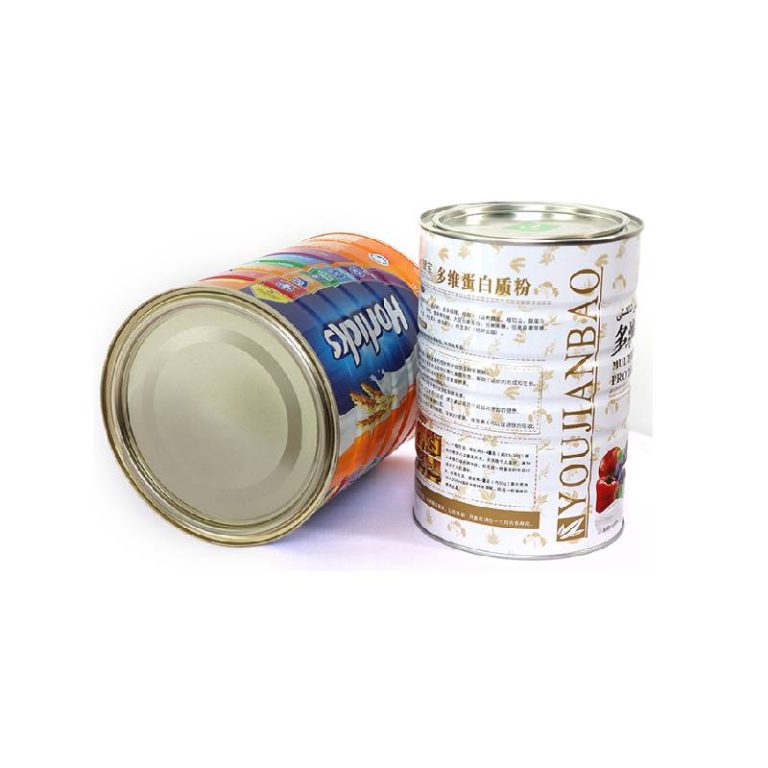Table of Contents
فوائد استخدام عبوات الدجاج المعلبة للتخزين على المدى الطويل
يعد تغليف علب الدجاج خيارًا شائعًا لتخزين المنتجات الغذائية على المدى الطويل، وخاصة الحساء. يوفر استخدام العلب الصفيح لتغليف الدجاج والحساء مجموعة من الفوائد التي تجعلها خيارًا مثاليًا للحفاظ على هذه العناصر القابلة للتلف. في هذه المقالة، سوف نستكشف مزايا استخدام علب صفيح الدجاج للتخزين على المدى الطويل.

كيفية تحسين كفاءة خط تعبئة علب الحساء لزيادة الإنتاج
في صناعة تغليف المواد الغذائية، تعد الكفاءة أمرًا أساسيًا لتلبية متطلبات الإنتاج وضمان تسليم المنتجات للمستهلكين في الوقت المناسب. أحد المجالات التي يمكن فيها تحسين الكفاءة هو خط تعبئة علب الحساء. ومن خلال تنفيذ استراتيجيات لتبسيط عملية التعبئة والتغليف، يمكن للمصنعين زيادة إنتاج الإنتاج وخفض التكاليف. في هذه المقالة، سنناقش كيفية تحسين كفاءة خط تعبئة علب الحساء لزيادة الإنتاج.
إحدى الخطوات الأولى في تحسين خط تعبئة علب الحساء هي تقييم العملية الحالية وتحديد مجالات التحسين. قد يتضمن ذلك إجراء تحليل شامل لخط التعبئة والتغليف، بدءًا من التعبئة الأولية للعلب وحتى الختم النهائي ووضع العلامات. من خلال تحديد الاختناقات أو أوجه القصور في العملية، يمكن للمصنعين وضع خطة لمعالجة هذه المشكلات وتحسين الكفاءة الإجمالية.
أحد المجالات الشائعة حيث يمكن تحسين الكفاءة هو التعامل مع العلب الفارغة. ومن خلال تطبيق أنظمة آلية لتغذية العلب الفارغة في خط التعبئة والتغليف، يمكن للمصنعين تقليل الحاجة إلى العمل اليدوي وزيادة سرعة تعبئة العلب وإغلاقها. بالإضافة إلى ذلك، يمكن أن تساعد الأنظمة الآلية في تقليل مخاطر الأخطاء أو عدم الاتساق في عملية التعبئة والتغليف، مما يؤدي إلى منتج نهائي عالي الجودة.
هناك مجال رئيسي آخر لتحسين الكفاءة في خط تعبئة علب الحساء وهو وضع العلامات على العلب وترميزها . ومن خلال تنفيذ أنظمة وضع العلامات والترميز الآلية، يمكن للمصنعين تقليل الوقت والعمالة اللازمة لتطبيق الملصقات والرموز على العلب. يمكن أن يساعد ذلك في تسريع عملية التعبئة والتغليف والتأكد من تصنيف العلب وترميزها بدقة قبل شحنها إلى تجار التجزئة.
بالإضافة إلى تنفيذ الأنظمة الآلية، يمكن للمصنعين أيضًا تحسين الكفاءة من خلال توحيد عمليات التعبئة والتغليف وتدريب الموظفين على أفضل الممارسات. من خلال تطوير إجراءات تشغيل موحدة لخط التعبئة والتغليف، يمكن للمصنعين التأكد من أن جميع الموظفين يتبعون نفس العملية وأن هناك اتساقًا في تعبئة العلب. يمكن أن يساعد ذلك في تقليل الأخطاء وتحسين الكفاءة العامة في خط التعبئة والتغليف.
علاوة على ذلك، يمكن للمصنعين تحسين الكفاءة من خلال صيانة معدات التعبئة والتغليف وصيانتها بانتظام. من خلال الحفاظ على المعدات في حالة عمل جيدة، يمكن للمصنعين تقليل مخاطر الأعطال أو الأعطال التي يمكن أن تعطل عملية التعبئة والتغليف. يمكن أن تساعد الصيانة المنتظمة أيضًا على إطالة عمر المعدات والتأكد من أنها تعمل بأعلى كفاءة.
في الختام، يعد تحسين الكفاءة في خط تعبئة علب الحساء أمرًا ضروريًا لزيادة إنتاج الإنتاج وخفض التكاليف. ومن خلال تقييم العملية الحالية، وتنفيذ الأنظمة الآلية، وتوحيد الإجراءات، وصيانة المعدات، يمكن للمصنعين تبسيط عملية التعبئة والتغليف وتحسين الكفاءة العامة. ومن خلال اتخاذ خطوات لتحسين الكفاءة، يمكن للمصنعين تلبية متطلبات الإنتاج وتقديم منتجات عالية الجودة للمستهلكين في الوقت المناسب.
In the food packaging industry, efficiency is key to meeting production demands and ensuring timely delivery of products to consumers. One area where efficiency can be optimized is in the soup tin can packaging line. By implementing strategies to streamline the packaging process, manufacturers can increase production output and reduce costs. In this article, we will discuss how to optimize soup tin can packaging line efficiency for increased production.
One of the first steps in optimizing a soup tin can packaging line is to evaluate the current process and identify areas for improvement. This may involve conducting a thorough analysis of the packaging line, from the initial filling of the cans to the final sealing and labeling. By identifying bottlenecks or inefficiencies in the process, manufacturers can develop a plan to address these issues and improve overall efficiency.
One common area where efficiency can be improved is in the handling of empty cans. By implementing automated systems for feeding empty cans into the packaging line, manufacturers can reduce the need for manual labor and increase the speed at which cans are filled and sealed. Additionally, automated systems can help to reduce the risk of errors or inconsistencies in the packaging process, leading to a higher quality end product.
Another key area for optimizing efficiency in a soup tin can packaging line is in the labeling and coding of cans. By implementing automated labeling and coding systems, manufacturers can reduce the time and labor required to apply labels and codes to cans. This can help to speed up the packaging process and ensure that cans are accurately labeled and coded before they are shipped to retailers.
In addition to implementing automated systems, manufacturers can also optimize efficiency by standardizing packaging processes and training employees on best practices. By developing standardized operating procedures for the packaging line, manufacturers can ensure that all employees are following the same process and that there is consistency in the packaging of cans. This can help to reduce errors and improve overall efficiency in the packaging line.
Furthermore, manufacturers can optimize efficiency by regularly maintaining and servicing packaging equipment. By keeping equipment in good working condition, manufacturers can reduce the risk of breakdowns or malfunctions that can disrupt the packaging process. Regular maintenance can also help to extend the life of equipment and ensure that it is operating at peak efficiency.
In conclusion, optimizing efficiency in a soup tin can packaging line is essential for increasing production output and reducing costs. By evaluating the current process, implementing automated systems, standardizing procedures, and maintaining equipment, manufacturers can streamline the packaging process and improve overall efficiency. By taking steps to optimize efficiency, manufacturers can meet production demands and deliver high-quality products to consumers in a timely manner.







